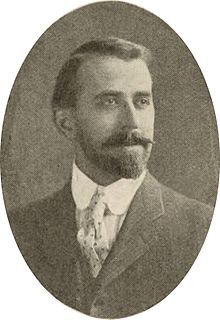Ralph Vary Chamberlin | |
|---|---|
 Chamberlin circa 1905 | |
| Born | January 3, 1879 |
| Died | October 31, 1967 (aged 88) Salt Lake City, Utah |
| Nationality | American |
| Alma mater | Cornell University University of Utah |
| Known for |
|
| Spouses | Daisy Ferguson
(m. 1899; div. 1910)Edith Simons
(m. 1922; died 1965) |
| Children | 10 |
| Scientific career | |
| Fields | |
| Institutions | University of Utah Museum of Comparative Zoology Brigham Young University |
| Thesis | North American Spiders of the Family Lycosidae (1905) |
| Doctoral advisor | John Henry Comstock |
| Notable students | |
Ralph Vary Chamberlin[a] (January 3, 1879 – October 31, 1967) was an American biologist, ethnographer, and historian from Salt Lake City, Utah. He was a faculty member of the University of Utah for over 25 years, where he helped establish the School of Medicine and served as its first dean, and later became head of the zoology department. He also taught at Brigham Young University and the University of Pennsylvania, and worked for over a decade at the Museum of Comparative Zoology at Harvard University, where he described species from around the world.
Chamberlin was a prolific taxonomist who named over 4,000 new animal species in over 400 scientific publications. He specialized in arachnids (spiders, scorpions, and relatives) and myriapods (centipedes, millipedes, and relatives), ranking among the most prolific arachnologists and myriapodologists in history. He described over 1,400 species of spiders, 1,000 species of millipedes, and the majority of North American centipedes, although the quantity of his output was not always matched with quality, leaving a mixed legacy to his successors. He also did pioneering ethnobiological studies with the Goshute and other indigenous people of the Great Basin, cataloging indigenous names and cultural uses of plants and animals. Chamberlin was celebrated by his colleagues at the University of Utah, however he was disliked among some arachnologists, including some of his former students. After retirement he continued to write, publishing on the history of education in his home state, especially that of the University of Utah.
Chamberlin was a member of the Church of Jesus Christ of Latter-day Saints (LDS Church). In the early twentieth century, Chamberlin was among a quartet of popular Mormon professors at Brigham Young University whose teaching of evolution and biblical criticism resulted in a 1911 controversy among University and Church officials, eventually resulting in the resignation of him and two other professors despite widespread support from the student body, an event described as Mormonism's "first brush with modernism".[3]
- ^ Cite error: The named reference
Up in Armswas invoked but never defined (see the help page). - ^ Cite error: The named reference
Home from Cornellwas invoked but never defined (see the help page). - ^ Arrington, Leonard J.; Bitton, Davis (1992). "Church and Kingdom: Creative Adjustment and Reinvigoration". The Mormon Experience: A History of the Latter-Day Saints (2nd ed.). Urbana: University of Illinois Press. pp. 258–261. ISBN 978-0-252-06236-0.
Cite error: There are <ref group=lower-alpha> tags or {{efn}} templates on this page, but the references will not show without a {{reflist|group=lower-alpha}} template or {{notelist}} template (see the help page).